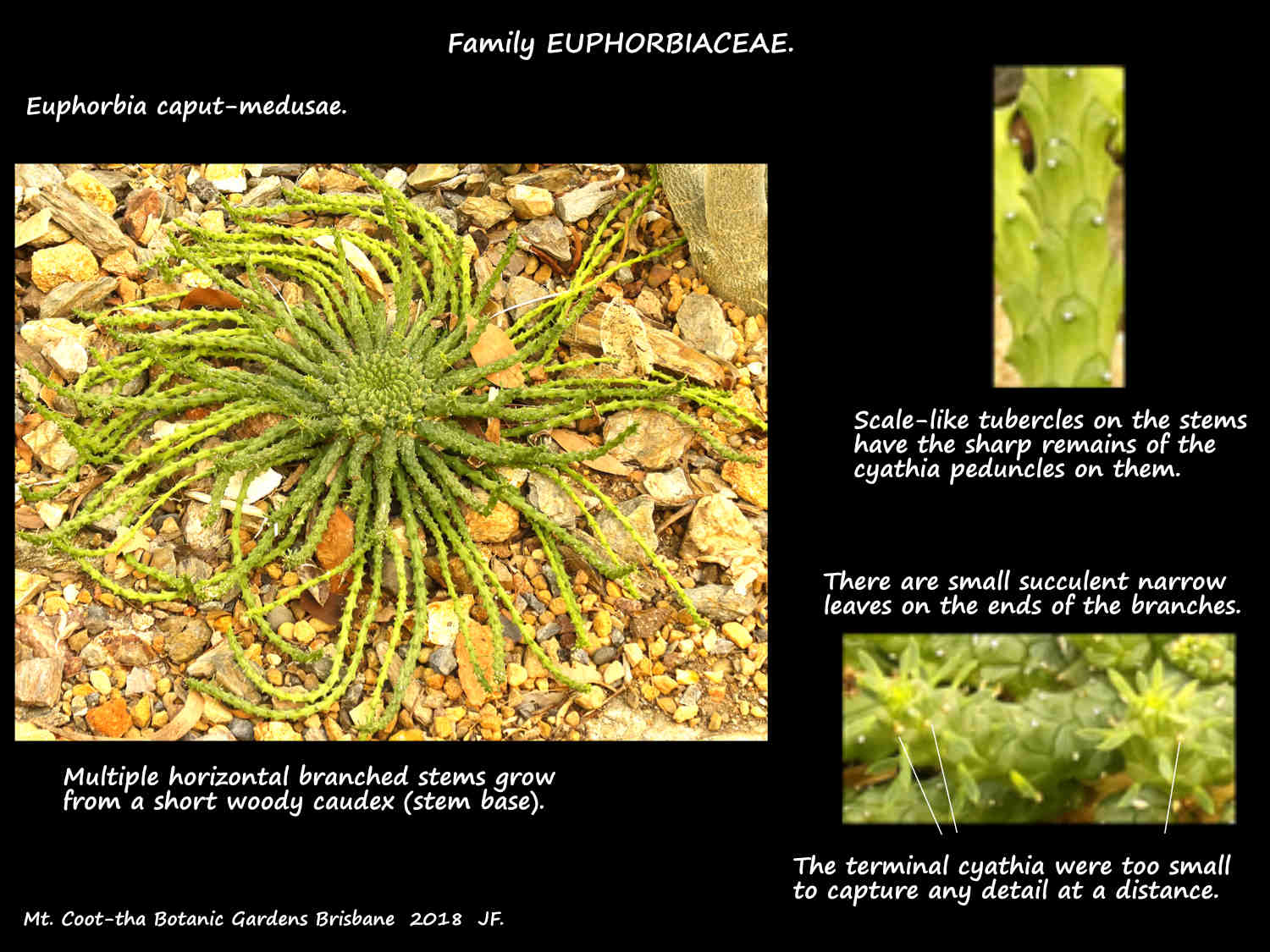Euphorbia caput-medusae.
A succulent herb with a short persistent woody base or caudex from which the roots and stems grow.
The crowded horizontal stems, sometimes partially buried can be up to 0.5 m long.
The branching stems are covered in scale-like tubercles.
The stems have a milky sap.
The small narrow leaves fall off early with only a few remaining at the ends of the branches.
Inflorescences are a terminal cluster of solitary cyathia on peduncles.
When the cyathia fall off the prickly peduncles remain down the stem.
The cyathia have a cup-shaped involucre around 12 mm across.
The 5 lobes on the rim bend inwards over the male flowers.
Between the lobes are the 5 nectar glands with white linear or fringed appendages on the rim.
The glands gradually change colour from green to red or pink.
Inside each involucre are a few male flowers around a single female flower.
The male or staminate flowers are a single stamen on a pedicel.
The female or pistillate flower, on an increasingly long pedicel has 3 bifid styles.
The fruit are 3-chambered capsules.
J.F.


